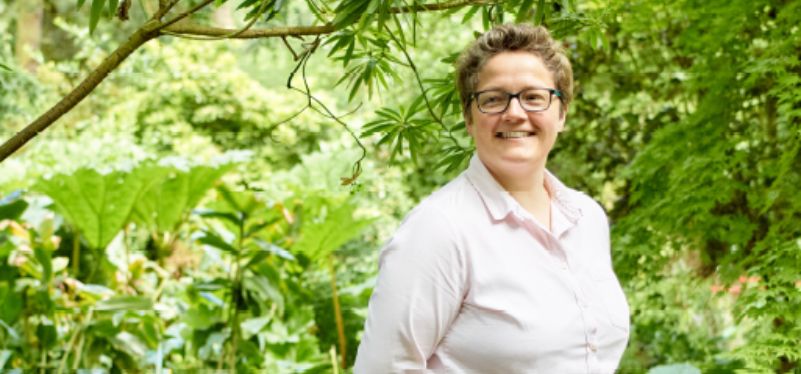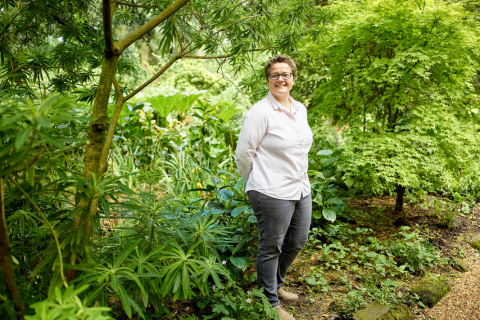Open Space
Professor Ruth Hunter and the greenway project that will transform the lives of future generations

CONTEXT
A decade ago, East Belfast was one of the most deprived areas in Northern Ireland. Many of its people suffered disproportionately poor health, low skills, low educational attainment and a poor living environment – a situation so bad that in 2014 the Rough Guide to Ireland described East Belfast as “inadvisable to visit”. But then £40m of funding from the National Lottery and various Government departments developed the Connswater Community Greenway, with the aim of turning the area into a “shared, welcoming, safe, peaceful and open space”.
BACKGROUND
“The Connswater Community Greenway encourages physical and social activity, exercise and non-car commuting,” says Ruth Hunter, Professor of Planetary and Public Health at the Centre for Public Health. “When it was first planned in 2010, Professor Frank Kee [Director of the Centre for Public Health] knew it would be vital to evaluate the public health impact of the greenway. I was the post-doctoral research fellow on the project.”
METHODOLOGY
Hunter’s work on the PARC Project (Physical Activity and the Regeneration of Connswater) conducted an evaluation of the public health impact of the urban greenway. Together with colleagues across Queen’s (from fields as diverse as sociology, psychology, economics and urban planning), Hunter and Kee conducted a survey of 1,200 residents, collecting data on their level of physical activity, mental health, social environment and perceptions of their local environment. “After the greenway was opened in September 2017, we repeated the survey using a combination of methods to assess the impact of the new urban greenway,” says Hunter.

FINDINGS
“We learnt the greenway had made a significant improvement to people’s lives, particularly those in low-income communities,” says Hunter. “Today, local communities report improved mental wellbeing and quality of life. Our modelling has also found that if the greenway prompts just two per cent of residents to go from being physically inactive to the Government’s recommended amount of weekly physical activity, the greenway will pay for itself in 40 years. People’s attitudes towards their local environment are much more positive as well, in terms of aesthetics, safety and their sense of belonging to place.”
OUTCOMES
Hunter now leads a consortium called GroundsWell to evaluate the contribution of urban green and blue space to the prevention of non-communicable diseases in urban settings. Part of this work involves a five-year follow-up of the public health impact of the Connswater Community Greenway itself, the longest piece of research thus far into the impact of urban greenways. “We will be evaluating public health and the impact of the greenway on reducing diseases, saving lives and reducing the burden of chronic diseases on the NHS, but this has never been ‘just’ a health project,” she says. “We’re interested in social return on investment – tourism, visitors, employment, productivity, car dependency, flood alleviation and climate change.” They’re also working with the Department of Infrastructure to see how they can help with the monitoring and evaluation of the 25-year, £100m Northern Ireland Greenway Strategy. “And we’re looking not just at public health but also planetary health – how these spaces can help promote things like sustainable energy sources, sustainable housing, sustainable food sources and food security for low-income families. The idea is that a project that was funded initially with National Lottery funding becomes embedded into government policy to improve the lives of generations to come.”
Professor Ruth Hunter is Professor of Public and Planetary Health at the Centre for Public Health.